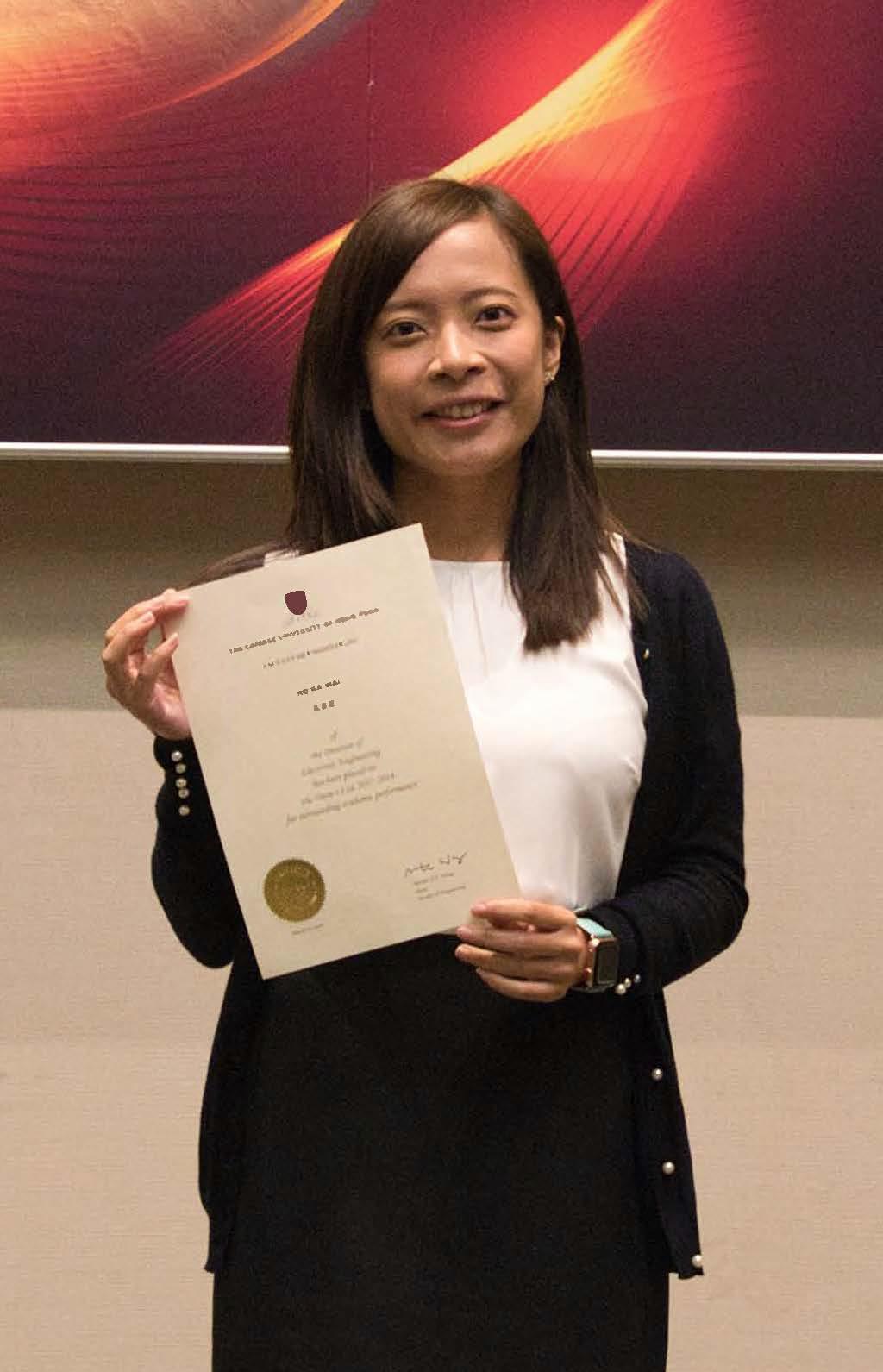Homepage
Home
Objective
This course is designed for students to gain an understanding of technological development of power-management IC design. Through this course, students will learn the essentials of voltage-regulator design. Recent advances in selected topics will also be discussed.
Syllabus
Design, simulation and measurement methods of power management integrated circuits. Bandgap voltage references, linear regulators, low-dropout regulators and switching-mode regulators. Circuit layout design and floor planning.
Learning Outcome
By the end of the course, students should be able to
- Have an overall picture of the history, progress, and importance of power-management circuits.
- Understand the principle of operation of typical voltage regulators
- Perform circuit designs of voltage reference, linear regulator and switching-mode power converter.
- Understand the design tradeoffs of the specifications.
Objective
Variation of different circuit implementation methods; conventional design flow; rapid-prototyping;
VHDL and Verilog; deep submicron design flow; high-level synthesis;
IC testing, test pattern generation; scan design and built-in self-test; introduction to packaging technology.
(Original Course Code: ELE7260)
Syllabus
Variation of different circuit implementation methods; conventional design flow; rapid-prototyping;
VHDL and Verilog; deep submicron design flow; high-level synthesis;
IC testing, test pattern generation; scan design and built-in self-test; introduction to packaging technology.
(Original Course Code: ELE7260)
Learning Outcome
Laboratory
The laboratory works include experiments on image analysis, enhancement, restoration and coding.
|
Chung Ka Yin John 鍾家然
Studying the M.Sc. Programme at CUHK-EE has been truly a rewarding experience. The faculty members are passionate and knowledgeable, who inspired and enlightened me on the semiconductor industry. The courses are designed in a practical perspective and especially suitable for engineers to acquire state-of-the-art technological knowledge in the scope of engineering. My experience in CUHK was fruitful and useful to my career prospect. |
|
Marco Ho 何震宇
After I obtained my undergraduate degree in Canada, I returned to Hong Kong to work. When I decided to shift my focus from software programming to hardware engineering, I chose the M.Sc. programme offered by the Department of Electronic Engineering in the Chinese University of Hong Kong. Its curriculum encompasses the wide variety of advanced technologies, from optical communications to integrated circuit designs, from multimedia signal processing to solid-state fabrications. It provides me with multi-faucet aspects and interdisciplinary exposures. It was during this programme that I found my enthusiasm in power-management integrated circuits, and after I completed the M.Sc. programme, I stayed in the Department to pursue my Ph.D. degree. |
|
Xie Qijie 謝啟杰
I applied to the M.Sc. programme offered by the Department of Electronic Engineering, the Chinese University of Hong Kong, after I have obtained the bachelor degree in the South China Normal University. CUHK provides students with comfortable learning environment and advanced facilities. What’s more, its curriculum contains myriad informative courses, covering optical communication, solid state, integrated circuit and image processing. Interactive class mode between professors and students helped effective learning and all kinds of projects facilitated me to turn what I have learnt in class into reality. Because of my interest in optical communication, I decided to pursue the Ph.D. degree in the Electronic Engineering Department, after completion of my M.Sc. programme. |
|
Cao Zehong 曹澤宏
I obtained my bachelor degree in Electronic and Information Engineering at Northeastern University, China. After that, I came to the Department of Electronic Engineering, the Chinese University of Hong Kong to study the Master of Science degree. The Department of Electronic Engineering has well-known professors and advanced research facilities. By learning some courses, including Analog Integrated Circuit Design, Digital Integrated Circuit Design, Power Management Technology and Project Course, my innovation and research capability are increased rapidly. When I completed these courses, I am very interested in integrated SoC design. Therefore, I chose the Institute of Electronics, National Chiao Tung University in Taiwan to continue my Ph.D. study after the completion of Master Program. |
|
Ye Yuting 葉玉婷
After I obtained the bachelor degree in Northwestern Polytechnical University, I came to the Chinese University Hong Kong to study M.Sc. Programme offered by the Department of Electronic Engineering. EE provides comfortable environment and advanced hardware and software facilities to students. These courses cover variety of advanced technology: Power Management of Integrated Circuit, VLSI Design, Solid-State Sensor and Lighting System, Image Processing and Video Technology. In addition, these courses require students to do course project, presentation, case study to improve comprehensive ability. The study experience of CUHK makes me grow up a lot, it is of great help to my future career development. |
|
Wang Hongda 王宏達
After achieved my bachelor’s degree in NUAA, I applied the M.Sc. programme offered by Department of Electronic Engineering, CUHK. During the study here, students can not only discuss the cutting edge academic topic with professors, but participate into interested research areas as well. The department has offered a large variety of courses, including VLSI design methodology and testing, CMOS analog IC design, RF circuits and systems, image processing and video technology. Broad range in academy background would help students choose the most suited direction, while guidance from the professor will make the in-depth research possible. Since I have been interested in VLSI design, I choose to stay in EE to continue my Ph.D. study. |
|
Wang Yu 王宇
After achieved my bachelor’s degree from The School of Electronic Information and Electrical Engineering, Shanghai Jiaotong University, I applied to the M.Sc. programme offered by the Department of Electronic Engineering, The Chinese University of Hong Kong. Here, I learned a lot of useful knowledge, made friends with motivated students and learnt from the top level professors. The University provides us with a very favorable learning environment. All in all, the knowledge learned here benefit me a lot no matter in work or life. |
|
Siu Chun Sing 蕭振聲
After graduated from The Hong Kong Polytechnic University majoring in Applied Physics, I took the part-time mode Electronic Engineering MSc programme in CUHK for broadening my horizons. The courses provided in this programme are comprised of a lot of professional and practical knowledge that breakthroughs the traditional concepts in terms of technology, sharping my analytical skills in critical thinking. There are two courses that impressed me most. The first one is the Fiber Optics which comprehensively discloses the wisdoms from our founding chairman, Prof. Charles Kao. The second one, Intellectual Property Management, trendily gives the career-based training in how to protect the engineering inventions in terms of law. I am very grateful for the all-round learning experiences in CUHK. |
|
Yang Yuren 楊裕仁
I received bachelor’s degree from the School of Electronic and Engineering of Nanjing University, and then went to the Chinese University of Hong Kong to pursue a M.Sc. degree in Electronic Engineering. During the period, I took part in the development of intelligent hardware called Ensa by using the knowledge and teacher’s guidance in the classroom. I founded the Olympic Science and Technology Co., Ltd. and obtained the offer of Hong Kong Science Park incubation. After graduation, he founded the Shadow Express Electronic Commerce (Hong Kong) Company Limited and participated in research and development of Shadowbox in order to make Hong Kong’s logistics industry more efficient and convenient. |
|
Tan Zicong 譚梓聰
After I received the MSc. Degree from the Department of Electronic Engineering, CUHK, I found I had not just learned the knowledge in CUHK, I also learned a lot of ways to seek knowledge by myself. This is the most important knowledge than the knowledge from book in my whole life. The professors in the Department of Electronic Engineering rather teach you the way how to learn than just tell you the knowledge itself. The faculty members did not just teach knowledge. They told us some knowledge about life philosophy, gave us chances to visit some big companies or do some research. In this department, you can find out what you really like to do and help you find the way to do it. |
|
Lai Chun Kiu 黎雋僑
The study of the Master of Science degree has definitely broadened my horizon in the field of electronic engineering. It supplemented my knowledge of the actual design of electronic devices at the transistor level. For instance, the Power Management Technology course taught me the design of voltage regulators; VLSI Digital Signal Processing introduced me the application of FPGA programming and efficient designs of algorithms using hardware. |
|
Zhang Fan 張帆
After I obtained a bachelor’s degree in South China University of Technology, I chose to continue my study by majoring in electronic engineering at the Chinese University of Hong Kong. One year's study time is very substantial although short. The EE programme of the Chinese University of Hong Kong provides us with courses that are very close to the actual needs of industry so that I can adapt to the work content very well after graduation. At the same time, the EE programme also provides a variety of courses for students from all backgrounds, so that students can find the right direction for their own development. In addition, professors here are very professional, and they are also very willing to help students so that students can get the most authoritative knowledge in the most efficient way. During the study here, I learned the frontier knowledge and more importantly, I found the direction of my life. I found myself very interested in exoskeleton robots, so I decided to become a Ph.D. student to continue research in this area. |
|
Ko Ka Wai 高嘉慧
After receiving my bachelor’s degree in Biomedical Engineering, I further pursue a Master’s degree in Electronic Engineering at the Chinese University of Hong Kong. As a part-time student, I felt difficult to meet the demands of both the study and work at the beginning. Fortunately, professors and tutors provided a lot of support to me outside the classroom. In my opinion, the MSc programme was very comprehensive and intensive that enabled me to get involved in both theoretical study and project management. |
|
Xin Yi 辛毅
After I received my bachelor’s degree in Fudan University, I chose MSc Electronic Engineering programme offered by the Department of Electronic Engineering, CUHK. |
|
Shum Tak Lok, Samuel 沈德諾
Currently, I am working in a research institute in HK. The academic qualification is the major concern in my job. At the beginning, I just see this MSc programme offered by the Department of Electronic Engineering in CUHK as a steppingstone of my career success. And I don’t care about the interest of the course subject or the course grade. However, this concept is totally changed when I finished my first course called the Power-Management Technology. In this course, Prof. Leung can make use of the examples in daily life to explain some complex concept. This kind of teaching style has inspired my change in the pursuit of learning attitude, which is of great benefit to my future research work. |
|
Zhou Sai 周賽
After graduating from undergraduate school, I chose to pursue Master of Science degree in CUHK to clarify my career planning and develop myself. Though one-year MSc programme is short, I attained lots of new knowledge and many unforgettable experiences. The curriculum expects covering variety of aspects in electronic technologies, it also has innovation and management course to inspire students’ creative capacities. Most importantly, Department of Electronic Engineering offers research and development project in which you can do research independently under the supervision of a professor. Thanks to this project, I decided to get deeper in computer science field. From EE to AI, it is Department of EE provided me a platform where I not only entered a new filed, and then liked it, but also became competitive in job market as equipped with project experience. All members in department of EE are kind as well as responsible and classmates are friendly and always willing to help me in study and life. Unfortunately, due to the outbreak of COVID-19, the chance for chatting in face to face was rare and precious, but I will treasure all memories with everyone in CUHK. |
|
Tang Min 唐敏
It was a wonderful year of studying in the EE Department, CUHK. I have learned three things during this year. Firstly, “Always being optimistic towards the change”. In this year of the epidemic, although it was not easy for us to be back home, we celebrated all kinds of festivals together and created amazing and special memories. Secondly, “Study hard, play hard”. That rule helped me obtain the scholarship while having a fun time in Hong Kong. Last but not least, “Communicate with classmates as much as we can”. Communication could help us obtain more information and open our minds, especially when we are lost. |
Objective
This course covers the design of analog integrated circuits using modern CMOS technology. Extensive circuit simulations will be made using Cadence/SPECTRE in the homework problems and the course project. Contents include: Review of fundamentals; analog circuit building blocks: operational amplifier, comparator, voltage and current references; switched-capacitor circuits; current mode circuits; continuous-time filters; A/D and D/A converters: parallel, serial, algorithmic and over-sampling converters.
Syllabus
After finishing this course, students are expected to
- Be able to analyze and design CMOS analog IC building blocks, like operational transconductance amplifiers and comparators.
- Be able to analyze, design and characterize basic CMOS data converters of different type, including flash, successive approximation, pipeline, and oversampling types.
Learning Outcome
We will be using intensive computer simulations in the homework. Matlab is used to design and verify the system performance.
|
Chung Ka Yin John 鍾家然
中文大學電子工程碩士課程令我獲益良多!學系裡的教授都很有熱忱和知識淵博,他們啓發我對于半導體行業的思考。這課程從實用層面方向設計,尤其適合工程師修讀,能獲得工程界最尖端旳技術和知識。我在中大的經驗很寶貴,對我的事業發展有莫大幫助。 |
|
Marco Ho 何震宇
我在加拿大取得學士學位,之後回港工作。當我决定把自己的專修範疇由軟件編程轉移至硬件設計後,便選擇了香港中文大學電子工程系開辦的修課式碩士課程。該課程涵蓋多種先進技術:光通信、集成電路設計、多媒體信號處理、固態組裝等。它爲我提供多向導和跨學科的涉獵。就讀期間,我發現自己對集成電路電源管理的熱愛漸漸增加,因此完成課程後,我留在電子工程系繼續攻讀博士課程。 |
|
Xie Qijie 謝啟杰
我在華南師範大學取得學士學位後,便申請了香港中文大學電子工程學系的修課式碩士課程。學系給予學生良好的學習環境和先進的學習設施。除此之外,這裡的課程涵蓋範圍廣闊,包括光纖通信、固體器件、積體電路和影像處理。教授與學生之間的互動模式大大地加强了學習成效,而各種習作項目更讓我把課堂上學到的東西轉化到實際應用。由于我在光纖通信方面特別感興趣,所以在完成課程後,便决定在電子工程系繼續我的博士學習。 |
|
Cao Zehong 曹澤宏
我在東北大學電子資訊工程專業獲得工學學士後,便來到香港中文大學電子工程學系就讀修課式碩士課程。香港中文大學電子工程學系擁有知名的教授和先進的學習設施。通過學習一些課程,包括模擬積體電路設計,數位積體電路設計,電源管理技術和項目課程,可以增加自己的創新和研究能力。通過這些課程的學習,使我在系統晶片整合方面很感興趣。所以在完成碩士課程後,我選擇在臺灣國立交通大學電子研究所繼續我的博士學習。 |
|
Ye Yuting 葉玉婷
我在西北工業大學取得學士學位,之後到香港中文大學攻讀電子工程系修課式碩士課程。學系提供良好的學習氛圍和先進的軟硬件設施。該課程涵蓋多種先進技術:集成電路電源管理,超大規模集成電路設計,固態傳感器及照明系統,圖像處理及視頻技術等。除此之外,課程要求學生做課程項目、演講、案例分析等,促進學生的綜合能力。中大的學習經歷讓我成長收獲很多,對我以後的事業發展莫大幫助。 |
|
Wang Hongda 王宏達
我在南京航空航天大學取得學士學位之後,便申請了香港中文大學電子工程學系的修課式碩士課程。在這裏學生不僅可以與教授討論尖端學術課題,也可以參與到感興趣的研究領域之中。學系的課程覆蓋了諸多方面,包括:超大規模集成電路設計方法與測試,CMOS模擬集成電路設計,射頻電路與系統,影像處理等。廣範的學科背景有助于學生選擇適合自己的方向,而教授的指導則可以幫助學生進行深入的研究。由于我一直對超大規模集成電路的設計很感興趣,所以在課程結束之後,我選擇了留在電子工程系繼續攻讀博士學位。 |
|
Wang Yu 王宇
我在上海交通大學電子信息與電氣工程學院完成學士學位,便申請了香港中文大學電子工程學系授課式研究生課程。在這裏我學到了很多有用的知識,認識了積極向上的同學,結識了世界頂尖的老師。學校提供給我們了非常有利的學習和活動環境,接觸到了先進的教學環境和體制。總而言之,這裏學到的知識將讓我受益匪淺,在工作和生活中有巨大的幫助。 |
|
Siu Chun Sing 蕭振聲
畢業于香港理工大學應用物理系後,我選擇了以兼讀模式修讀中文大學電子工程系理碩士學位以提升競爭力。當中許多的高階技術課程擴闊了我的思維和視野。例如,在光纖工程課堂上可瞭解到創系系主任高錕教授的智慧; 在知識產權商業化運用課上可得到實用的職前訓練。十分感謝中文大學電子工程系對我的栽培。 |
|
Yang Yuren 楊裕仁
在南京大學電子科學與工程學院取得學士學位後,之後前往香港中文大學攻讀電子工程系修課式碩士課程。在碩士就讀期間,利用課堂上所學的知識和老師的指導,參與Ensa智能硬件的開發,創立了奧林匹克科技有限公司,幷獲得了香港科學園科技孵化資格;畢業之後,創立了影子速遞電子商務(香港)有限公司,參與研發Shadowbox,通過科技去讓香港的物流業更加高效方便。 |
|
Tan Zicong 譚梓聰
在中文大學電子工程系學習獲得了電子工程碩士學位后,回顧我一年的學習,我發現我不僅僅學到很多知識,還學會了如何去自己探尋知識。俗話有說,‘授之以魚,不如授之以漁’,這裡的教授更加傾向與教會你如何去學習,而不是把知識點都給你說明白。這裡的教授上課不僅僅會教授知識,還會教我們人生的哲理,會給予我們機會去大企業參觀或者給予我們機會去研究自己喜歡的方向。在這裡,你會找到你喜歡的發展方向以及會得到繼續發展的幫助。 |
|
Lai Chun Kiu 黎雋僑
毫無疑問,香港中文大學電子工程學系的理學碩士課程讓我增添了不少知識,擴闊了我的眼光,讓我從電晶體 (transistor) 的層面更深入了解電子零件的運作。「電源管理技術」教我如何設計穩壓器。「VLSI 數碼信號處理」讓我認識了FPGA 和它的應用,以及如何從硬件層面更好地設計演算法。 |
|
Zhang Fan 張帆
在我從華南理工大學畢業之後,我選擇了香港中文大學的電子工程專業以繼續我的學習。壹年的學習時間,雖然短暫,但是也非常地充實。香港中文大學電子工程學專業給我們提供了非常貼近實際工業需要的課程內容,讓我在畢業之後可以非常好地適應工作內容。同時,對於各個背景的學生,電子工程系也提供了非常豐富課程選擇,讓每個學生都能找到最合適自己的發展方向。這裏的教授也非常之專業,在專業的同時也非常願意幫助學生,讓學生能以最高效的方式得到最權威的知識。在這壹年裏,我不僅學習到了前沿的知識,更重要的是,我找到了我人生的方向。我發現自己對外骨骼機器人非常感覺興趣,所以我決定成為壹名博士學生以繼續這領域的研究。 |
|
Ko Ka Wai 高嘉慧
當我完成生物醫學工程的學士學位後,我決定在香港中文大學繼續修讀電子工程的碩士課程。剛開始課程時,我因需要同時兼顧學業和工作而感到十分吃力。幸好,教授和導師都很樂意在課堂以外的時間解答我的問題。我認為這個碩士課程內容十分廣泛和充實,讓我能同時學習到有關電子工程的理論和項目管理。 |
|
Xin Yi 辛毅
我在復旦大學獲得學士學位之後,選擇了香港中文大學電子工程系開辦的電子工程系理學碩士項目。 |
|
Shum Tak Lok, Samuel 沈德諾
當初我選讀這電子工程碩士學位課程主要目的就是為了那個碩士名稱而已 ,因為我目前在研究院的工作性質,學歷是最重要的一環,所以我對所選的科目是否有興趣以及讀完出來的成積並不太在乎。然而,這觀念在我讀完了第一個課程後就徹底改變了。我記得這是一個有關電源管理技術的課程。負責這課程Prof. Leung利用日常生活作為例子,幫助我們理解課程中一些深澳的概念。這種教學模式啟發了我對追求學問態度上的改變,對我日後的研究工作大有裨益。 |
|
Zhou Sai 周賽
本科畢業后,為了明確自己的職業規劃并提升自己,我選擇到港中文攻讀授課式碩士學位。一年的讀書生涯雖然很短暫,但在這期間收穫了很多新的知識和很多難忘的經歷。電子工程系的課程,除了涵蓋電子技術的方方面面,還有創新管理課程激發創新能力。最重要的是,電子工程系還開設了研究提升課程。課程中你可以選擇一名導師,并在導師的指導下獨立完成科研項目。正是通過這門課程,我確定了自己的職業方向—計算機視覺。從電子工程到人工智能,是電子工程系提供了平台,讓我不僅接觸到新的領域然後喜歡上這個領域,還讓我因為有項目經歷的支撐在求職過程中更具有競爭力。電子工程系的老師們和善負責任,一起學習的同學們也十分友善且樂於助人。很遺憾因為疫情,線下一起交流的機會稀少而珍貴,但這些情誼我將永遠珍藏。 |
|
Tang Min 唐敏
在中大電子工程系學習絕對是非常美好的一年。這一年,我學到了三件事情。第一個是“始終對變化保持樂觀”。在疫情的這一年,雖然回家不容易,但我們一起慶祝各種節日,共同創造了美好而特別的回憶。二是“努力學習,盡情玩”。這條規則幫助我獲得了獎學金,同時在香港度過了愉快的時光。三是“盡可能多和同學交流”。交流可以幫助我們獲得更多資訊並打開思路,尤其是當我們迷茫時。 |



































